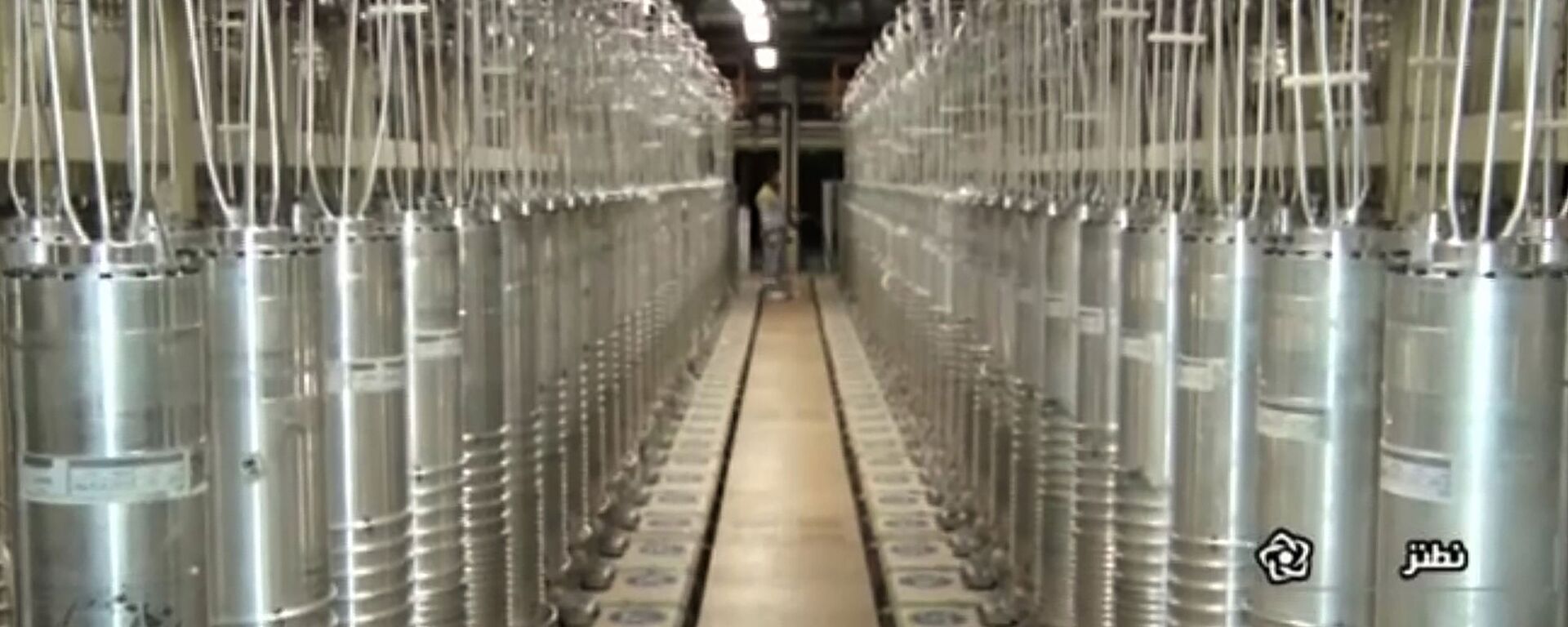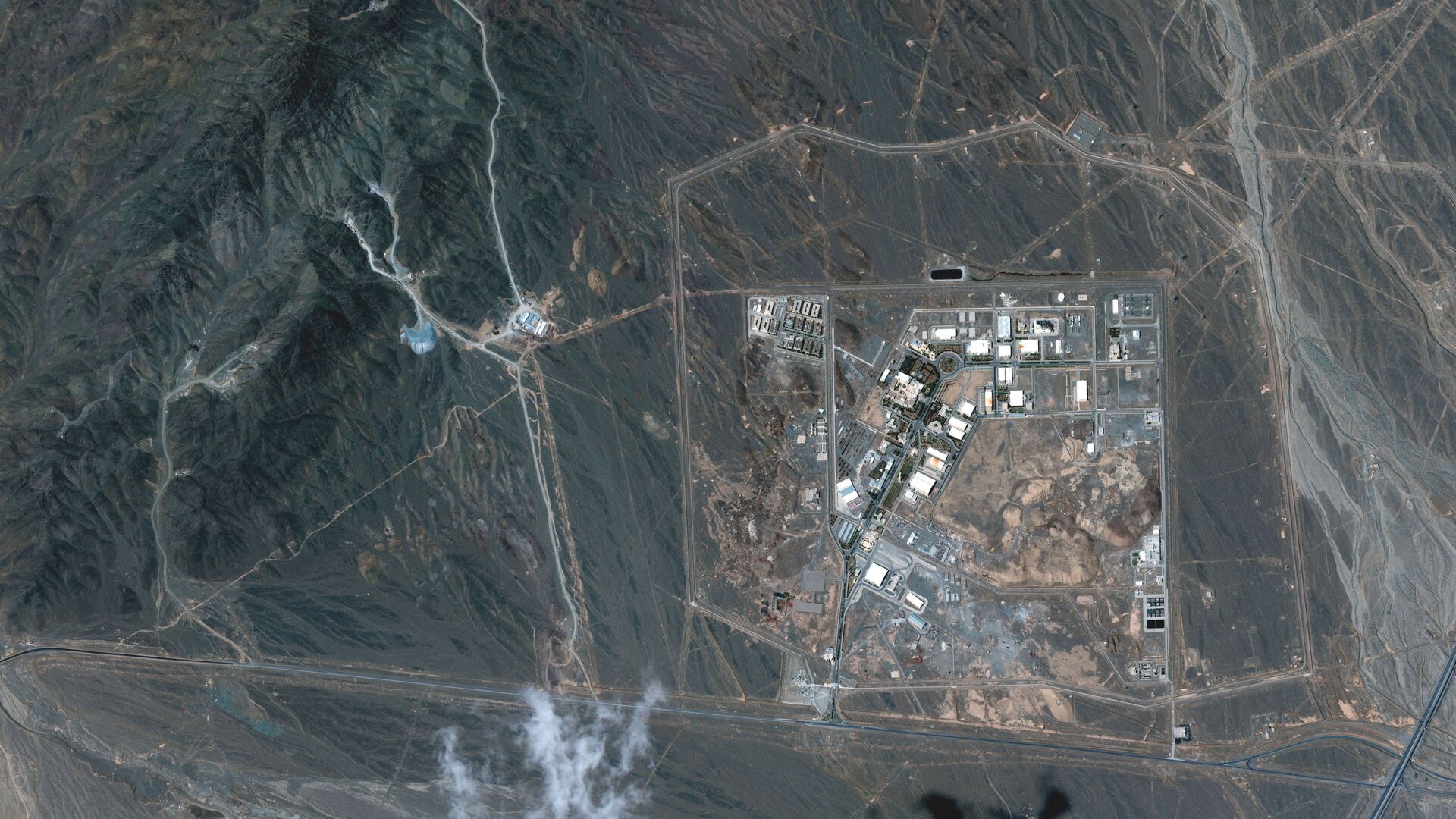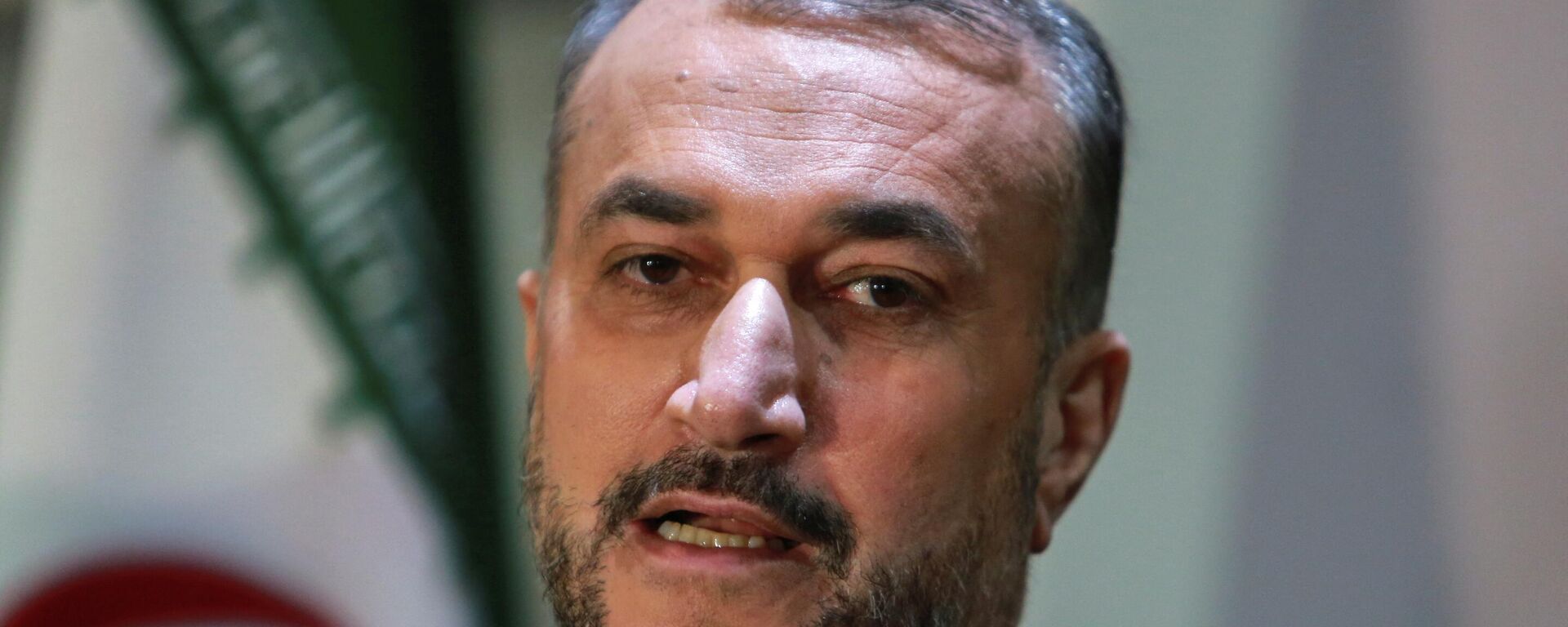https://sputnikglobe.com/20220417/im-going-deeper-underground-iran-transfers-uranium-centrifuges-to-hardened-subterranean-site-1094831423.html
Tehran Transfers Uranium Enrichment Centrifuges to Secure Locations Amid Sabotage Fears
Tehran Transfers Uranium Enrichment Centrifuges to Secure Locations Amid Sabotage Fears
Sputnik International
Iran has faced repeated acts of sabotage against its nuclear energy programme, with assassins murdering half a dozen of its nuclear scientists and saboteurs... 17.04.2022, Sputnik International
2022-04-17T10:33+0000
2022-04-17T10:33+0000
2022-04-17T11:00+0000
nuclear
centrifuges
iran
https://cdn1.img.sputnikglobe.com/img/07e5/04/0d/1082622495_0:459:2743:2002_1920x0_80_0_0_7154d8d6aedea8e8ee5afc1bccd147d5.jpg
Iran has moved nuclear enrichment centrifuge machines to secure locations ahead of the one-year anniversary of the act of sabotage against the TESA Karaj centrifuge-manufacturing workshop outside Tehran, Atomic Energy Organisation of Iran spokesman Behrouz Kamalvandi has revealed.“Given their high significance, centrifuge machines were moved to a safer location and are now in operation”, Kamalvandi said, speaking to Iran’s al-Alam television on Saturday.Natanz contains a nuclear fuel enrichment plant. The hardened facility is built deep underground and protected by 2.5 metre-thick concrete walls, which are themselves protected by a separate wall. The plant also features a reinforced concrete roof.Isfahan contains the Nuclear Technology Centre, a research facility containing four small research reactors.Nuclear Talks on HoldIran informed the IAEA of its plans to transfer the production of centrifuge components from Karaj to Isfahan back in January, prompting the agency to install surveillance cameras at the new centrifuge workshop facility. On Thursday, the IAEA confirmed that it had installed security cameras and removed seals from machines at the new Natanz workshop.Negotiations on the JCPOA came to a crashing halt in recent weeks after the United States announced that it would be keeping sanctions in place against the Islamic Revolutionary Guards' Quds Force – an elite Iranian military unit battling jihadists, and Israel, across the Middle East. Tehran has called on Washington to lift the sanctions against the unit, and to unfreeze Iranian assets trapped in foreign banks as a gesture of goodwill instead of piling on more and more preconditions for the nuclear agreement’s restoration.The centrifuge facility in Karaj was rocked in a large-scale sabotage attack in June 2021. Israeli media later reported that scientists collaborating with Mossad were involved in the operation, and that the intelligence agency was also behind a separate attack on Iran’s centrifuge manufacturing capabilities at Natanz in April of that year. The Natanz facility was also rocked by an explosion in July 2020.Iran suspects Israel of involvement in sabotage against its nuclear energy programme going back to at least 2009, when Mossad placed malware inside Iranian nuclear facilities, including the Natanz uranium enrichment site. Iran also blames Israel for the assassination of six of its nuclear scientists between 2007 and 2020.Israel typically neither confirms nor denies its involvement in the killings and sabotage, but has stated repeatedly that it will not allow any country in the Middle East, including Iran, to develop nuclear weapons.Tehran denies having any intention to build nukes, with its leaders repeatedly citing fatwas (religious edicts) by the late Supreme Leader Ayatollah Ruhollah Khomeini and his successor, Ayatollah Ali Khamenei, who deemed nukes and other weapons of mass destruction to be incompatible with Islamic law. Israel has called these edicts a worthless ‘fig leaf’, and has claimed for at least 15 years now that the Islamic Republic is just “weeks” or “months” away from obtaining the capability to build a nuclear weapon.Tehran has repeatedly asked why Tel Aviv seems to get preferential treatment from the IAEA and the international community in general on nuclear matters despite its suspected status as the Middle East’s only nuclear weapons state.
https://sputnikglobe.com/20220411/iranian-fm-us-keeps-imposing-new-conditions-before-nuclear-talks-reach-conclusion-1094658641.html
https://sputnikglobe.com/20211203/iranian-scientists-recruited-by-israels-mossad-behind-explosions-at-natanz-nuclear-plant---report-1091213701.html
iran
Sputnik International
feedback@sputniknews.com
+74956456601
MIA „Rossiya Segodnya“
2022
News
en_EN
Sputnik International
feedback@sputniknews.com
+74956456601
MIA „Rossiya Segodnya“
Sputnik International
feedback@sputniknews.com
+74956456601
MIA „Rossiya Segodnya“
nuclear, centrifuges, iran
nuclear, centrifuges, iran
Tehran Transfers Uranium Enrichment Centrifuges to Secure Locations Amid Sabotage Fears
10:33 GMT 17.04.2022 (Updated: 11:00 GMT 17.04.2022) Iran has faced repeated acts of sabotage against its nuclear energy programme, with assassins murdering half a dozen of its nuclear scientists and saboteurs repeatedly striking at its facilities. The Islamic Republic blames Israel for these acts of “nuclear terrorism”. Tel Aviv claims Iran’s nuclear programme has a secret military component.
Iran has moved nuclear enrichment centrifuge machines to secure locations ahead of the one-year anniversary of the act of sabotage against the TESA Karaj centrifuge-manufacturing workshop outside Tehran, Atomic Energy Organisation of Iran spokesman Behrouz Kamalvandi has revealed.
“Given their high significance, centrifuge machines were moved to a safer location and are now in operation”, Kamalvandi
said, speaking to Iran’s al-Alam television on Saturday.
“Following the terrorist operation against the TESA Karaj Complex, we had to tighten security measures. We moved a significant part of these machines and transferred the rest to Natanz and Isfahan”, the spokesman added.
Natanz contains a nuclear fuel enrichment plant. The hardened facility is built deep underground and protected by 2.5 metre-thick concrete walls, which are themselves protected by a separate wall. The plant also features a reinforced concrete roof.
Isfahan contains the Nuclear Technology Centre, a research facility containing four small research reactors.
Kamalvandi stressed that Iran’s security measures were completely in line with agreements reached with the International Atomic Energy Agency – the UN’s nuclear watchdog. He added however that the IAEA will not be given access to data recorded by agency cameras at Iranian nuclear sites until the 2015 Joint Comprehensive Plan of Action (JCPOA) nuclear deal is restored.
Iran informed the IAEA of its plans to transfer the production of centrifuge components from Karaj to Isfahan back in January, prompting the agency to install surveillance cameras at the new centrifuge workshop facility. On Thursday, the IAEA confirmed that it had installed security cameras and removed seals from machines at the new Natanz workshop.
Negotiations on the JCPOA came to a crashing halt in recent weeks after the United States announced that it would be keeping sanctions in place against the Islamic Revolutionary Guards' Quds Force – an elite Iranian military unit battling jihadists, and Israel, across the Middle East. Tehran has called on Washington to lift the sanctions against the unit, and to unfreeze Iranian assets trapped in foreign banks
as a gesture of goodwill instead of piling on more and more preconditions for the nuclear agreement’s restoration.
The centrifuge facility in Karaj was
rocked in a large-scale sabotage attack in June 2021. Israeli media
later reported that scientists collaborating with Mossad were involved in the operation, and that the intelligence agency was also behind a separate attack on Iran’s centrifuge manufacturing capabilities at Natanz in April of that year. The Natanz facility was also rocked by an explosion in July 2020.
Iran suspects Israel of involvement in sabotage against its nuclear energy programme going back to at least 2009, when Mossad placed malware inside Iranian nuclear facilities, including the Natanz uranium enrichment site. Iran also blames Israel for the assassination of six of its nuclear scientists between 2007 and 2020.
Israel typically neither confirms nor denies its involvement in the killings and sabotage, but has stated repeatedly that it will not allow any country in the Middle East, including Iran, to develop nuclear weapons.

3 December 2021, 00:52 GMT
Tehran denies having any intention to build nukes, with its leaders repeatedly citing fatwas (religious edicts) by the late Supreme Leader Ayatollah Ruhollah Khomeini and his successor, Ayatollah Ali Khamenei, who deemed nukes and other weapons of mass destruction to be incompatible with Islamic law. Israel has called these edicts a worthless ‘fig leaf’, and has claimed for at least 15 years now that the Islamic Republic is just “weeks” or “months” away from obtaining the capability to build a nuclear weapon.
Tehran has repeatedly asked why Tel Aviv
seems to get preferential treatment from the IAEA and the international community in general on nuclear matters despite its suspected status as the Middle East’s only nuclear weapons state.



